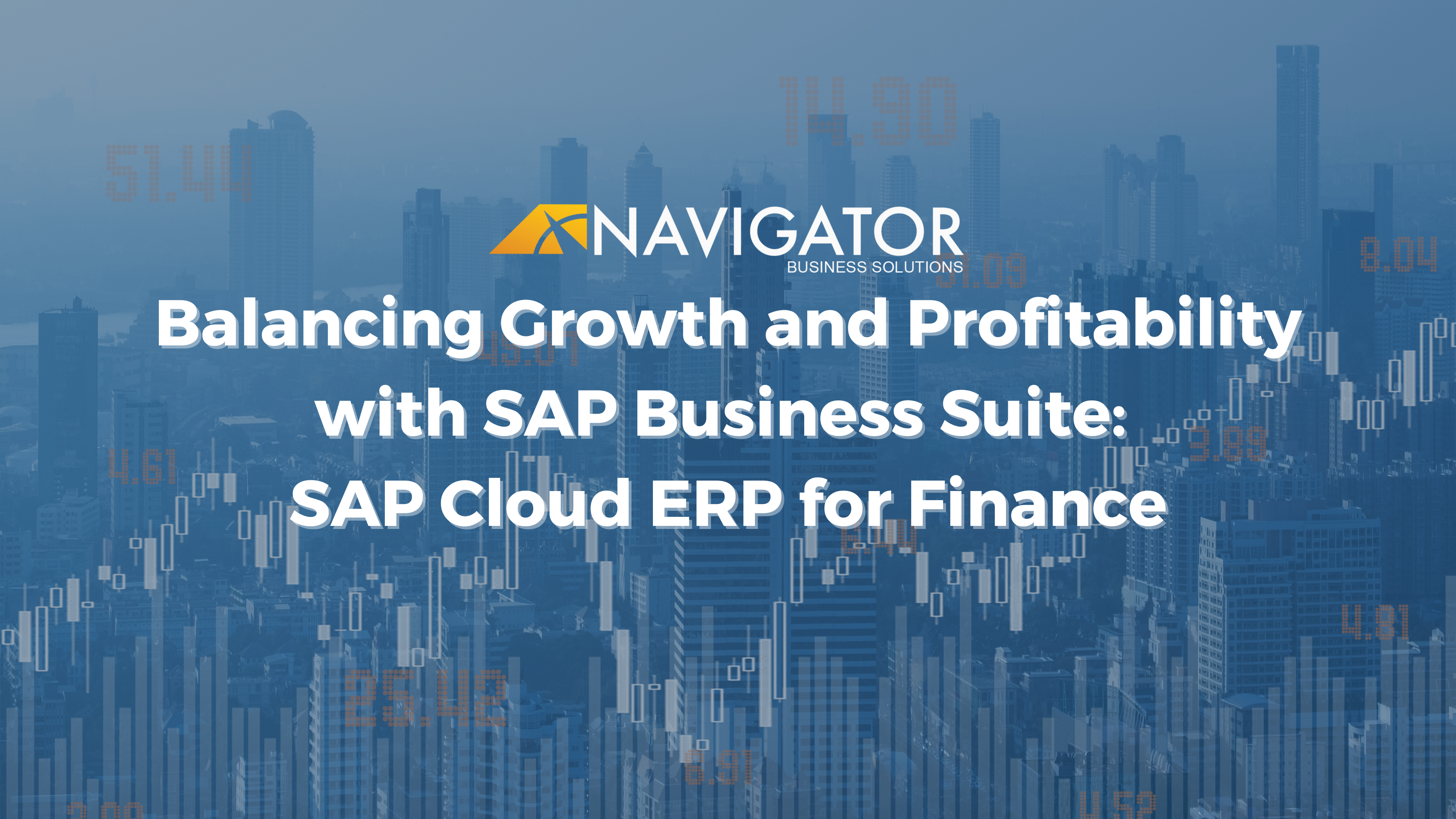One of the principal stakeholders who often drive digital transformation is the CFO. This is not surprising, because digital transformation and the adoption of a modern ERP solution benefits both financial performance and operational efficiency, two areas that are particularly near and dear to the CFO job function. Digital transformation also benefits CFOs more directly, because it assists with streamlining and automating financial business complexity.
As a comprehensive backend solution, cloud ERP benefits all areas of a business from operations and logistics to human resources and sales. However, many businesses begin using ERP after they outgrow QuickBooks and need a more robust set of financial management tools.
With that in mind, let’s take a look at four ways that S/4HANA Cloud Public Edition can help with streamlining and automating financial business complexity.
Automating Financial Business Complexity with Cloud ERP
There are many ways that S/4HANA Cloud Public Edition can help with financial management, including automated currency conversation and tax calculation. But four areas stand out when it comes to automating financial business complexity with ERP: automated financial reporting, predictive analytics, continuous soft close, and automated invoice matching.
1. Automated Financial Reporting
At the end of the day, business is about making money. For members of the C-suite and shareholders, as well as outside investors and sales staff, financial reporting plays a key role in monitoring the health of a business. Much of this financial reporting can be automated with S/4HANA Cloud Public Edition.
This financial report automation takes two forms.
First, S/4HANA Cloud can automatically feed financial data to key stakeholders via financial dashboards that are updated in real-time. Instead of having to consult a financial report, stakeholders can log into S/4HANA Cloud and monitor key financial metrics in real instead.
Businesses can use predefined dashboards built into the system, or create custom financial dashboards that focus only on specific metrics. These financial dashboards obviate the need for some internal financial reporting.
When financial reports are needed, S/4HANA also can automatically generate a range of financial reports without the need for manual intervention. This helps the finance department focus more on higher-value financial activities instead of wasting time on manual report generation.
2. Predictive Financial Analytics
A second way that S/4HANA Cloud helps with automating financial business complexity is through AI-driven predictive analytics.
While predictive analytics can’t replace thoughtful financial management, it can make the job much easier by analyzing financial data and automatically pulling out key financial trends taking place within the business. Instead of pouring over financial spreadsheets, a CFO can use the analytics within S/4HANA Cloud to zero in on financial trends quickly and efficiently.
Through the use of AI, a CFO also can drive greater financial intelligence by running a range of financial simulations that might not be possible otherwise due to computational complexity or a lack of time.
3. Continuous Soft Close
Profitability analysis allocations and both inter-company and GR/IR reconciliations don’t need to wait until the end of the period when a business uses S/4HANA Cloud Public Edition.
With S/4HANA Cloud, businesses can instead take a continuous accounting approach and use a soft close that simulates the financial health of a company at any time throughout the period, allowing a company to identify issues early and take immediate action.
If there are delays in collecting invoices from a particular customer, for example, a continuous soft close approach can spot these issues faster and enable a company to take timely remediation.
The biggest impact, however, is being able to use current financial information from ongoing soft close for what-if analysis, and for guiding strategic decision-making on an ongoing basis. Continuous soft close can be useful for product decisions, investment in new lines of business, and M&A activity, among other uses.
4. Automated Invoice Matching
Another area where S/4HANA Cloud Public Edition can help with automating financial business complexity is through automated invoice matching.
The machine learning built into S/4HANA Cloud can automatically match invoices with purchase orders and receipts of goods so the financial department can focus on higher-order strategic goals instead of spending time on the tedious task of chasing invoices and matching them to records in the system.
This automated invoice matching can accelerate the accounts payable process within a business and greatly reduce the manual invoice matching process that inevitably leads to errors.
See S/4HANA Cloud in Action
Automating financial business complexity isn’t hard. It just takes the right tools.
Learn more about SAP S/4HANA Cloud Public Edition and how it can help your business streamline financial management, or watch a demo of S/4HANA Cloud in action.
You also can get your specific questions answered by calling one of our experienced ERP consultants at (801) 642-0123, contact us form, or by writing us info@nbs-us.com.



